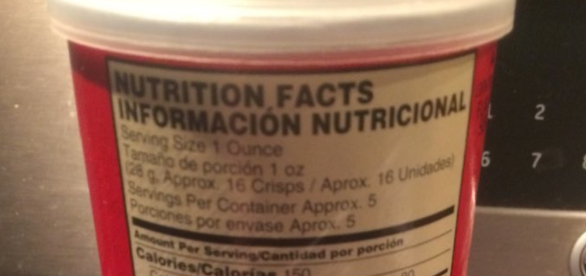Why Once You Pop, You Can’t Stop

The above — the “once you pop, you can’t stop” part, at least — was once the tagline for Pringles, the arc-shaped potato chips that came in an immediately-recognizable cylindrical container. A tube of Pringles, as anyone who has ever opened one can attest, all-too-often comes with an irresistible urge to eat every single last chip, consequences be damned. And yet, that can of Pringles often contains five servings, with a serving size of about 16 chips (“crisps”). Each serving is 150 calories, which is to say, about one and a half times the calories of a medium-sized apple. All five will put you at 750 calories, which is to say, about one and a half times the calories of a Big Mac.

And yet, we can eat Pringles and other potato chips without noticing the calories we’re eating. The same can’t be said for an apple. What gives?
Welcome to the magic of something called “vanishing caloric density.”
Steven Witherly is a food scientist whose job to understand why we like salty snacks and other junk food — he literally wrote the book on it. (Well, maybe not “literally” — it’s more like a whitepaper than a book.) His report, Why Humans Like Junk Food (pdf), is the industry standard on the topic. Witherly work doesn’t focus on Pringles — he groups them together with other potato chips and similar snacks like cheese puffs. There are many reasons why we like these foods and many reasons why we can eat them without pause, he concludes. But to Witherly, there’s one feature that stands out — how they dissolve so easily when they enter our mouths. “If something melts down quickly,” he told the New York Times,”your brain thinks that there are no calories in it . . . you can just keep eating it forever.” That’s vanishing caloric density. As one wellness blogger puts it, “in other words, these foods literally tell your brain that you’re not full, even though you’re eating a lot of calories.”
Pringles aren’t alone here — Cheetos are the biggest offender, per Witherly, while How Stuff Works lists “ice cream, popcorn and cotton candy” as others which make the list. And to make matters worse, these foods often are high in sugar, fat, and salt — three elements which make our taste buds tingle, leading us to want more. And this happens while the calorie-counting area of our subconscious doesn’t see a reason to say otherwise.
There’s more to the science of junk food cravings and our desire to keep on eating; the Times, with Witherly’s help, put together a punch list of factors in an infographic, available here. But hardly by coincidence, vanishing caloric density tops the chart.
Bonus fact: Vanishing caloric density helps explain our infatuation with chips, but what about soda? It’s not just the sugary taste — it’s more nefarious than that, if you buy into the conspiracy-in-a-can theory of Dr. Robert Lustig, at least. Dr. Lustig, a pediatric endocrinologist at the University of California, San Francisco believes that the ingredients of Coke fuel our consumption of the product. He outlined the theory to NPR
Well, what’s in Coke? Caffeine, good, good. So what’s caffeine? It’s a mild stimulant, right? It’s also a diuretic. It makes you pee free water. What else is in Coke? We’ll get to the sugar in a minute. What else? Salt, 55 milligrams of sodium per can, it’s like drinking a pizza. So what happens if you take on sodium and lose free water, you get? Thirstier, right. So why is there so much sugar in Coke? To hide the salt.
A fun theory, sure, but probably too far afield. For example, Lustig overstates things, for sure; there’s a lot more than 55mg of sodium in a slice of pizza.
From the Archives: Why Reusable Bags Often Have Cookies Inside: Or, how being green makes us prone to buying junk food.
Related: “Assorted Japanese Junk Food,” caloric density unknown.
